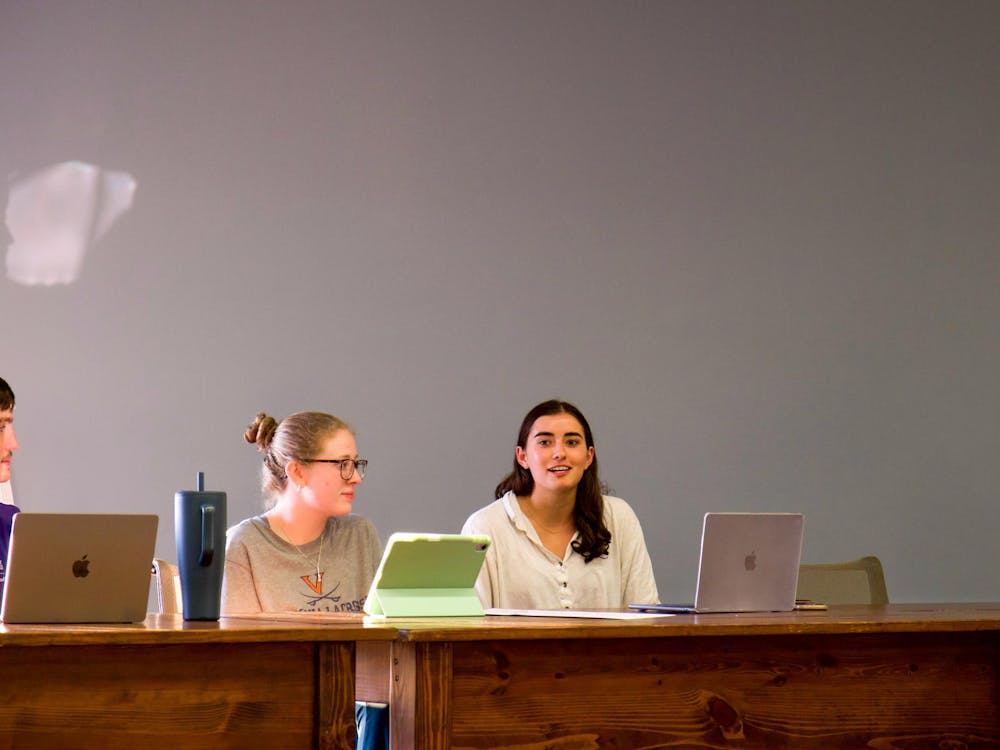In the face of Virginia's ever-growing budget crisis, almost every institute of higher learning continues to make steep cuts and push for passage of the $846 million bond referendum package which would provide financial support for colleges and universities across the state. Yet one department's $31 million budget this year has helped it stay removed from the current crisis and less anxious about the outcome of November's vote -- the University's athletic department.
Unlike the rest of the University, which relies heavily upon state funding, the athletic department operates as an auxiliary enterprise.
"An auxiliary is a unit that serves faculty, staff, students and/or the general public," explained Colette Sheehy, vice president of management and budget.
Sheehy said the state requires an auxiliary to be self-supporting and therefore must not only cover its direct costs, but also must pay an overhead fee to the University for services it provides including payroll, purchasing, personnel, etc.
"This means that we do not rely on any funding from the State's General Fund for our support," Assoc. Athletic Director Keith VanDerbeek added. "Therefore we have not had to present a plan for reducing our spending by a specified percentage cut as have other areas of the University."
Each year, the athletic department determines its spending limit based on how much it spent the previous year, accounting for inflation.
The athletic department's spending limit for the next three months, September through November, is $6 million.
However, "this does allow for us to exceed the limit if there are unavoidable costs or unexpected circumstances, which we would have to send to the state, via the University Budget Office, for approval," VanDerbeek said.
Ticket revenue makes up the athletic department's largest source of money. Other sources of income include student fees, corporate sponsorship money, private gifts and donations (including scholarships) and a premium that comes from being part of the Atlantic Coast Conference association.
"We follow the same guidelines as any other department with regard to how the money is distributed among different sports teams," VanDerbeek said. "The size of the football squad and the nature of the sport, in that it is a large source of revenue, means that we spend more on it."
The department is now focused on construction of a 15,000-seat basketball arena, set to begin in summer 2003. Estimates of the project's cost run around $128 million; $45 million of it has been raised so far, primarily through donations.
In addition, the department is trying to increase investment in women's sports and its grant-in-aid budget to bring in more scholarships for student athletes.
Sheehy pointed out that the department's large budget and varied revenue sources make it unique among colleges in Virginia.
"We [take in] more television revenue, larger gate receipts, advertising and conference revenue," than other Virginia schools, she said. "We also charge a student fee, but it is much lower than that of schools like William & Mary or James Madison that do not have the other sources to rely on."
Virginia Tech's athletic department most closely aligns with the University's. It runs as an auxiliary enterprise and, according to Virginia Tech Athletic Director Jim Weaver, has a budget this year of $24 million, as opposed to the University's $31 million.
Football receives the most money, followed by men's and women's basketball. Because of its auxiliary enterprise status, Virginia Tech's athletic department does not stand to benefit from the upcoming bond referendum either.
Still, VanDerbeek said he favors the measure.
"It's important for higher education," he said. "We will benefit just by the fact that these projects are for the University and that our particular enterprise is tied to it."






